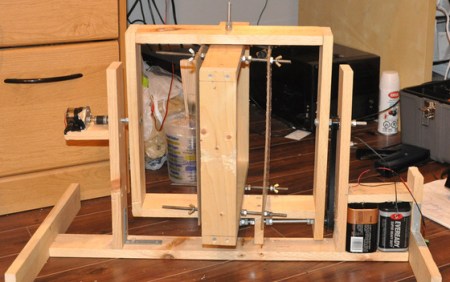
The Swap-O-Matic is vending machine built for recycling, not consuming. Instead of feeding money into the machine, you can get an item out of the machine by swapping it for something you don’t need anymore. It’s a great concept with a great retro design, probably influenced by the age of the automat.
[Lina Fenequito] and [Rick Cassidy] built the Swap-O-Matic around the time [Lina] was getting her MFA. The build was in Wired in 2005, but the project has been updated since then and has a new home at LaunchPad in Brooklyn, NY. The first version used a separate computer next to the machine that gave out combinations to locks on the doors. It looks like the new version has been improved with an integrated touchscreen and computer-activated locks leaving [Lina] and [Rick] with a very clean build.
It’s a great idea if you have a relatively homogeneous population with similar interests, so we expect to see some of these popping up at a few hackerspaces. Check out the Swap-O-Matic promo video after the break.
Continue reading “Swap-O-Matic: An Automat With Recycling In Mind”
















